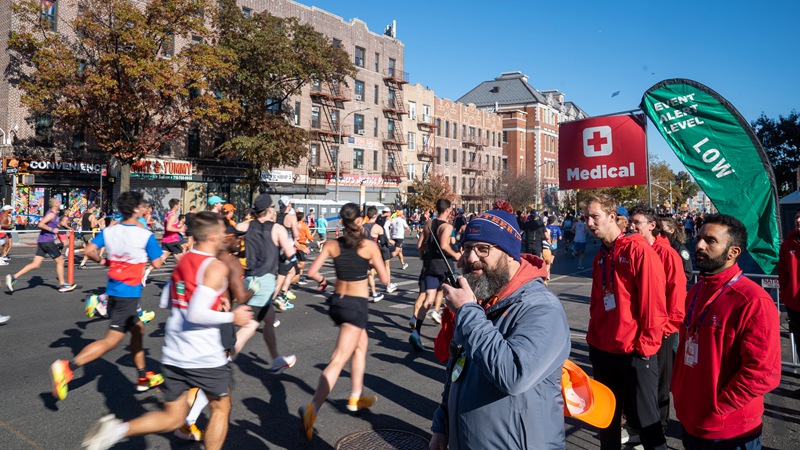Ham Radio Aids New York Marathon
By any metric, the New York Marathon is an immense production. The 50,000+ runners who make this the world's largest marathon. Their route will take them through all five of the city's boroughs, from the starting line on Staten Island up through Brooklyn and Queens, across the Queensboro Bridge to Manhattan's Upper East Side, north into the Bronx and then back down along the east side of Central Park to the finish line in the Park itself.

Ensuring that the whole thing goes off without a hitch is a remarkable feat of organization. The race relies on a small army of volunteers, who do everything from staffing the water stations at every mile marker and making sure runners don't get lost to offering medical expertise.
Donni Katzovicz is a ham radio enthusiast who has volunteered at the Marathon since 2018 through Event Hams, a group that has coordinated the Marathon's use of amateur radio for the last decade. He explains that ham radio essentially plays two key roles during the marathon.

The first is as a route for communications that don’t require the use of official channels. “Obviously,” he says, “The marathon has commercial 2 way radio licenses and its own communications infrastructure. You also have all the local emergency services—FDNY, NYPD, EMS. And they all have their own radios and equipment.”
At the most basic level, ham radio is any radio that operates on the radio bands reserved for amateurs. As Katzovicz explains, enthusiasts come up with all manner of uses for their little corner of the electromagnetic spectrum: “The hobby itself is really, really, incredibly broad and encompasses a lot of different parts of science and technology. Some people … have handheld walkie talkies and to talk to other licensed people in their neighborhood; others make their own radios or make their own Rube Goldberg-esque devices to listen and transmit, and others coordinate with local civil bodies and provide backup communications.”

In a scenario where, say, all a city’s power was out, battery-powered walkie talkies would still work just fine, whereas cell phones would be useless.